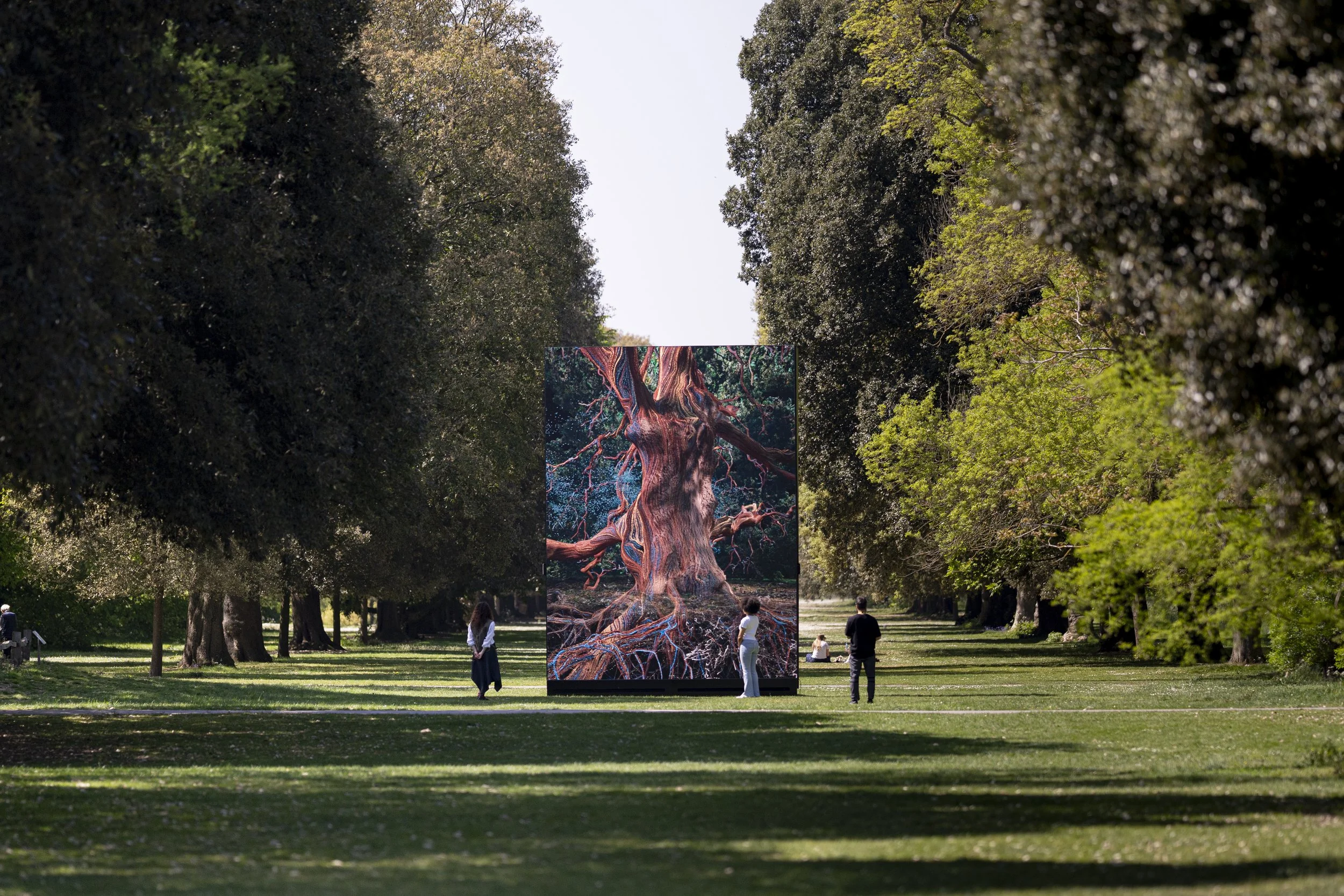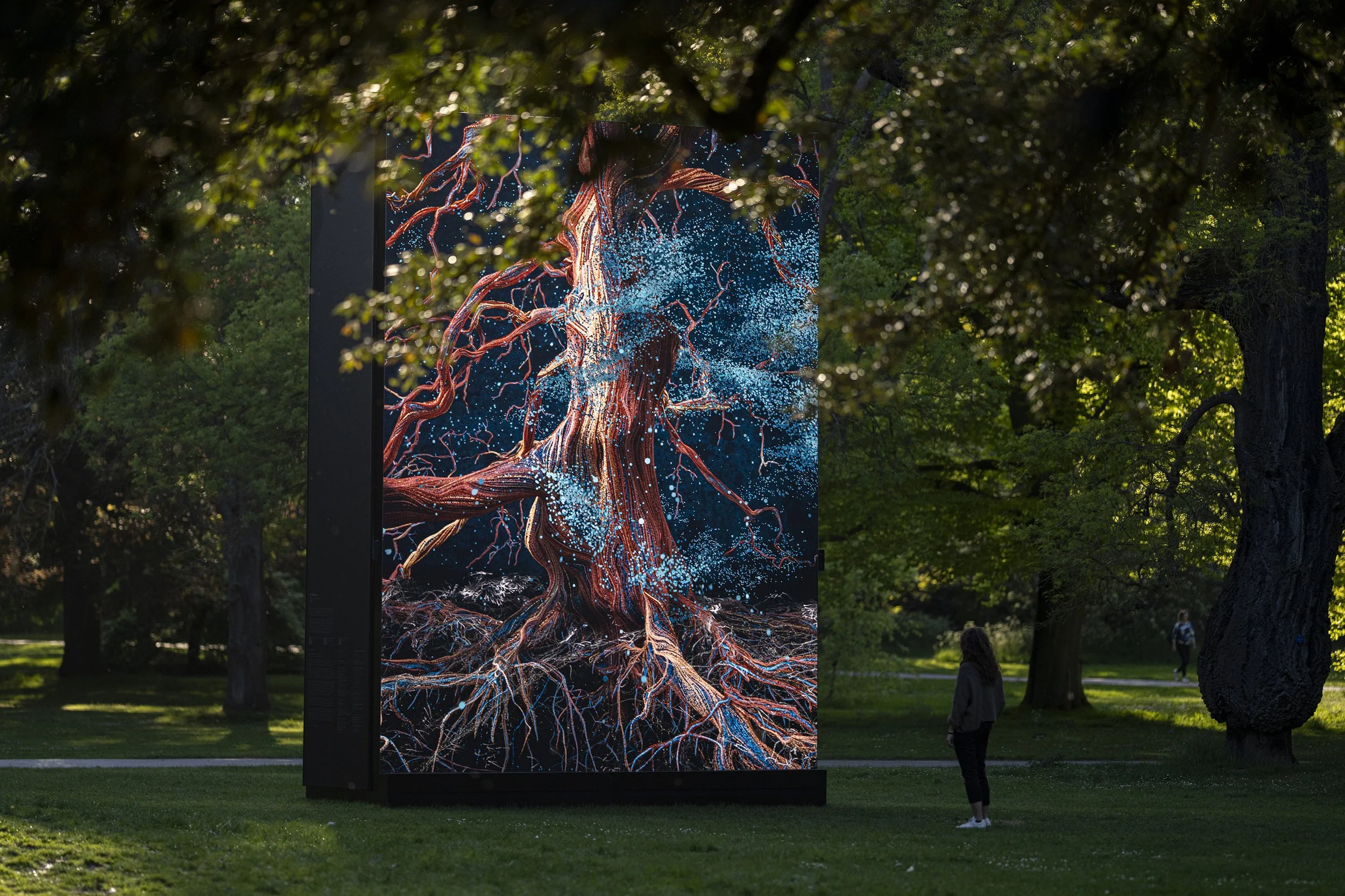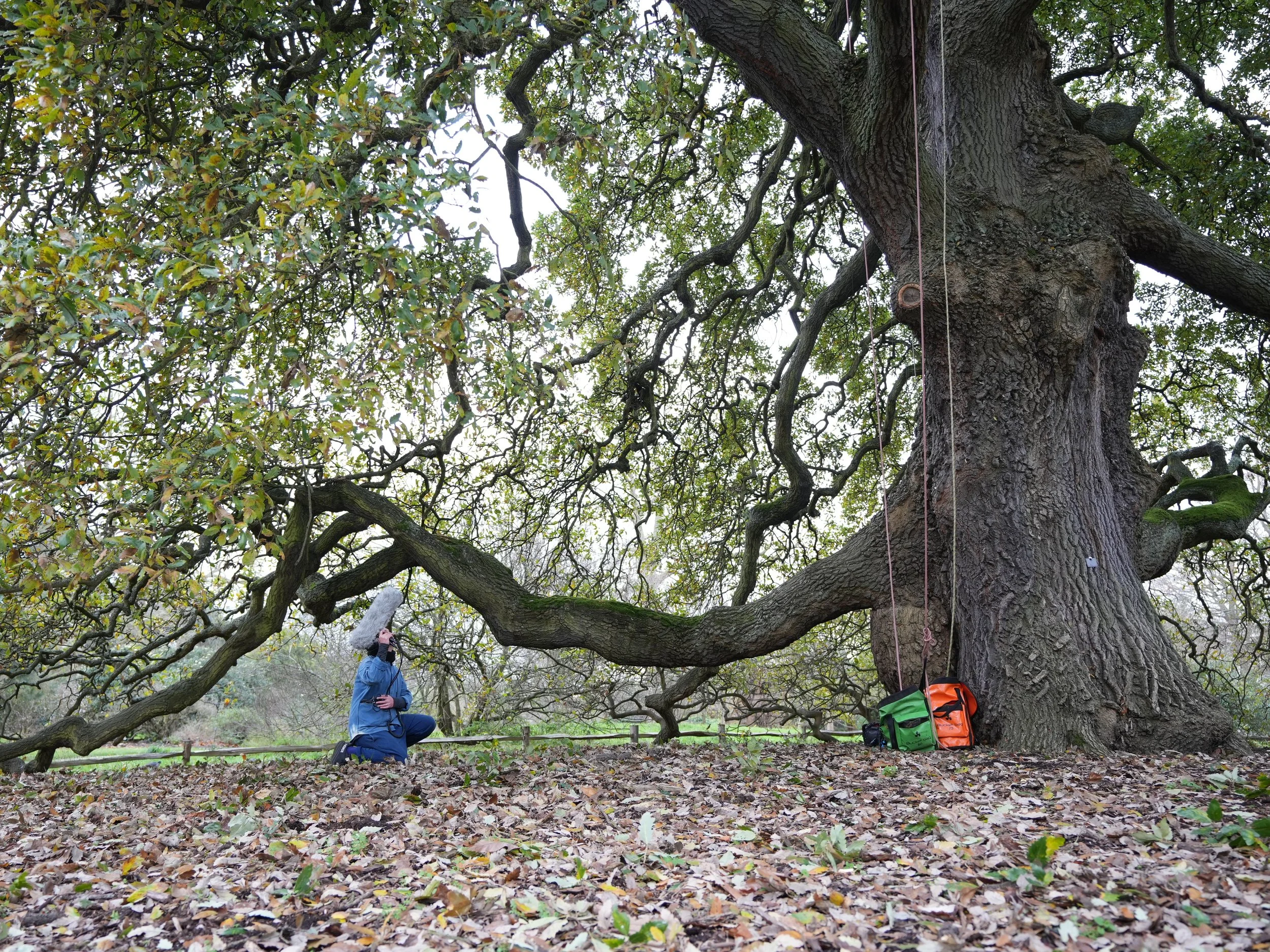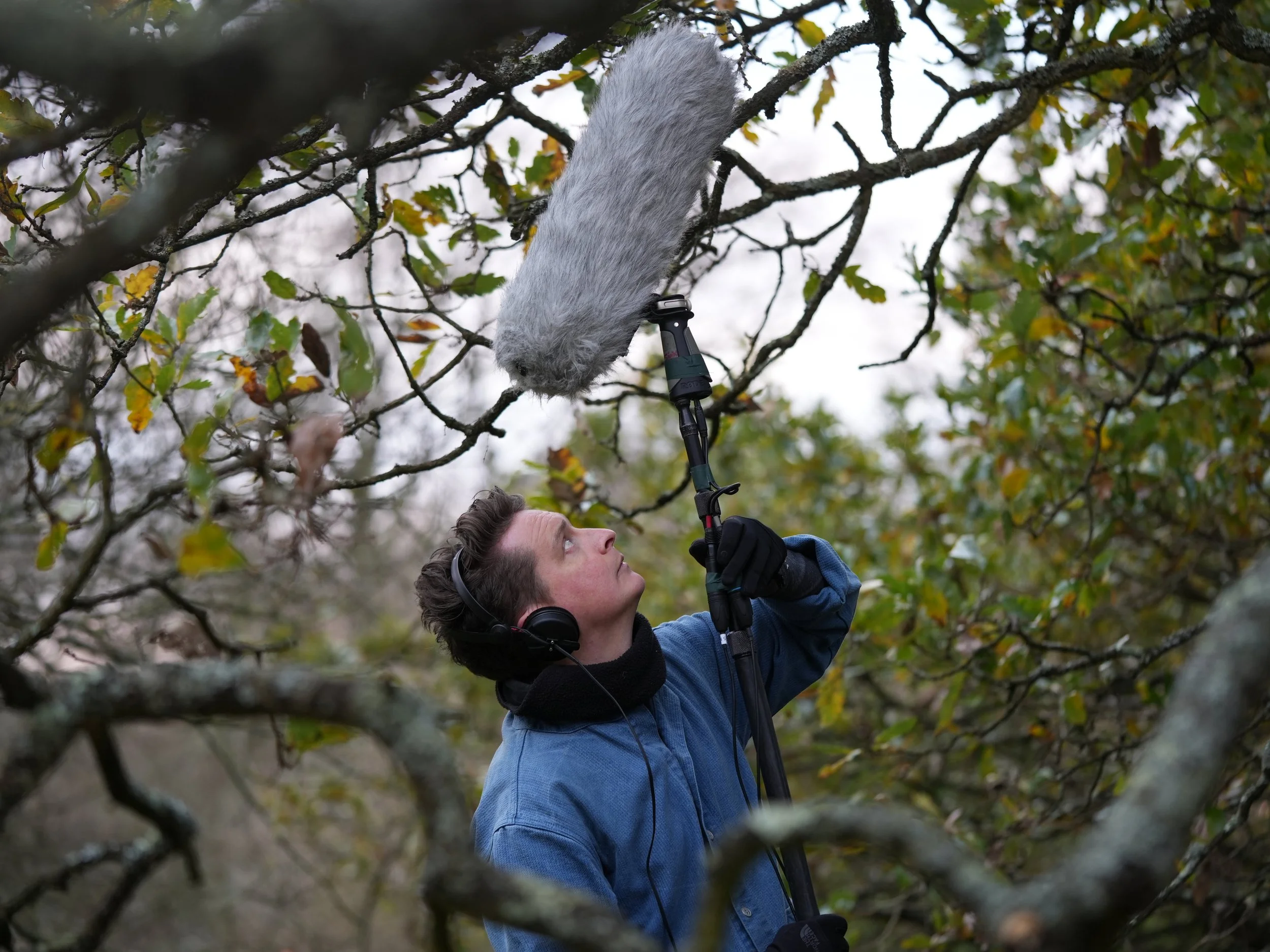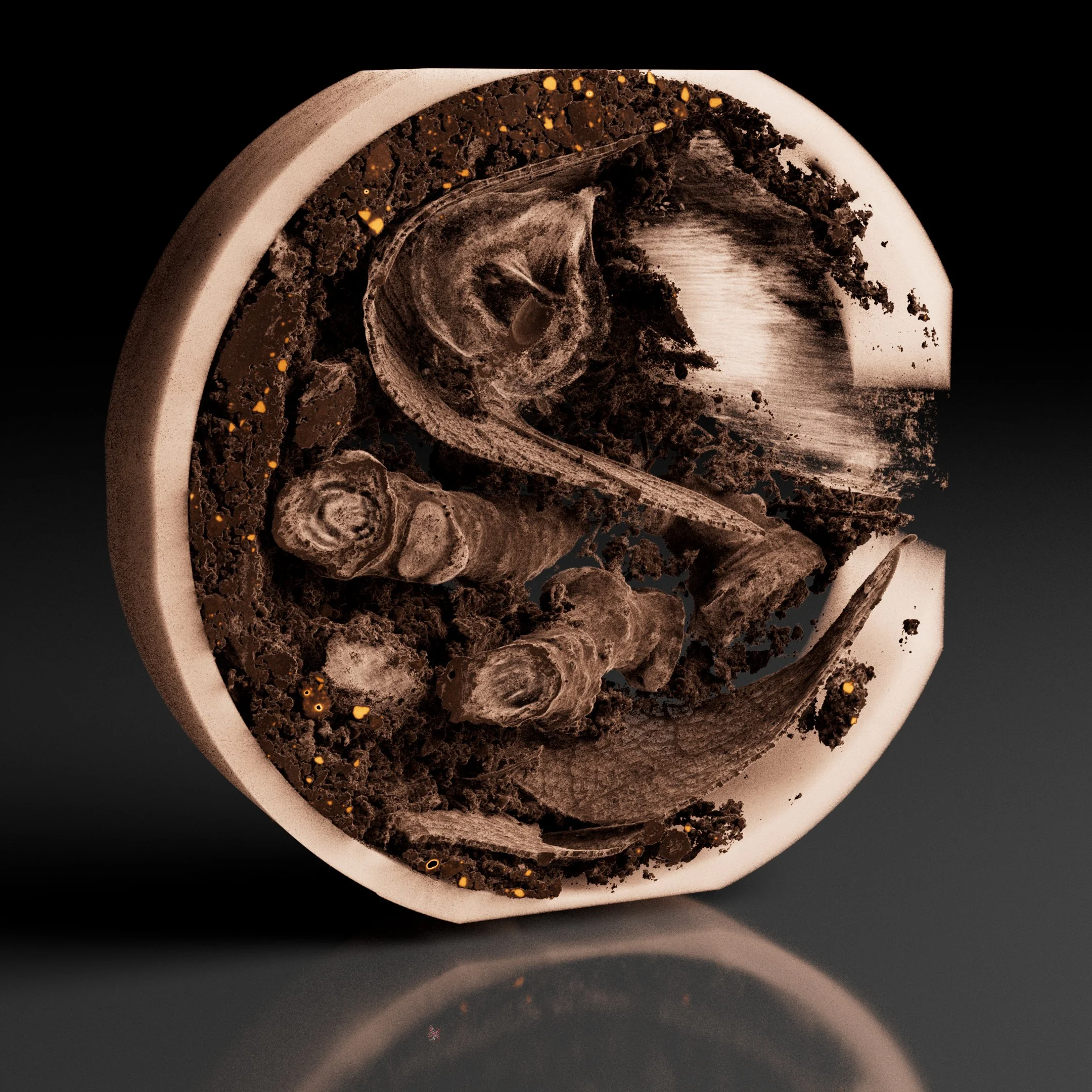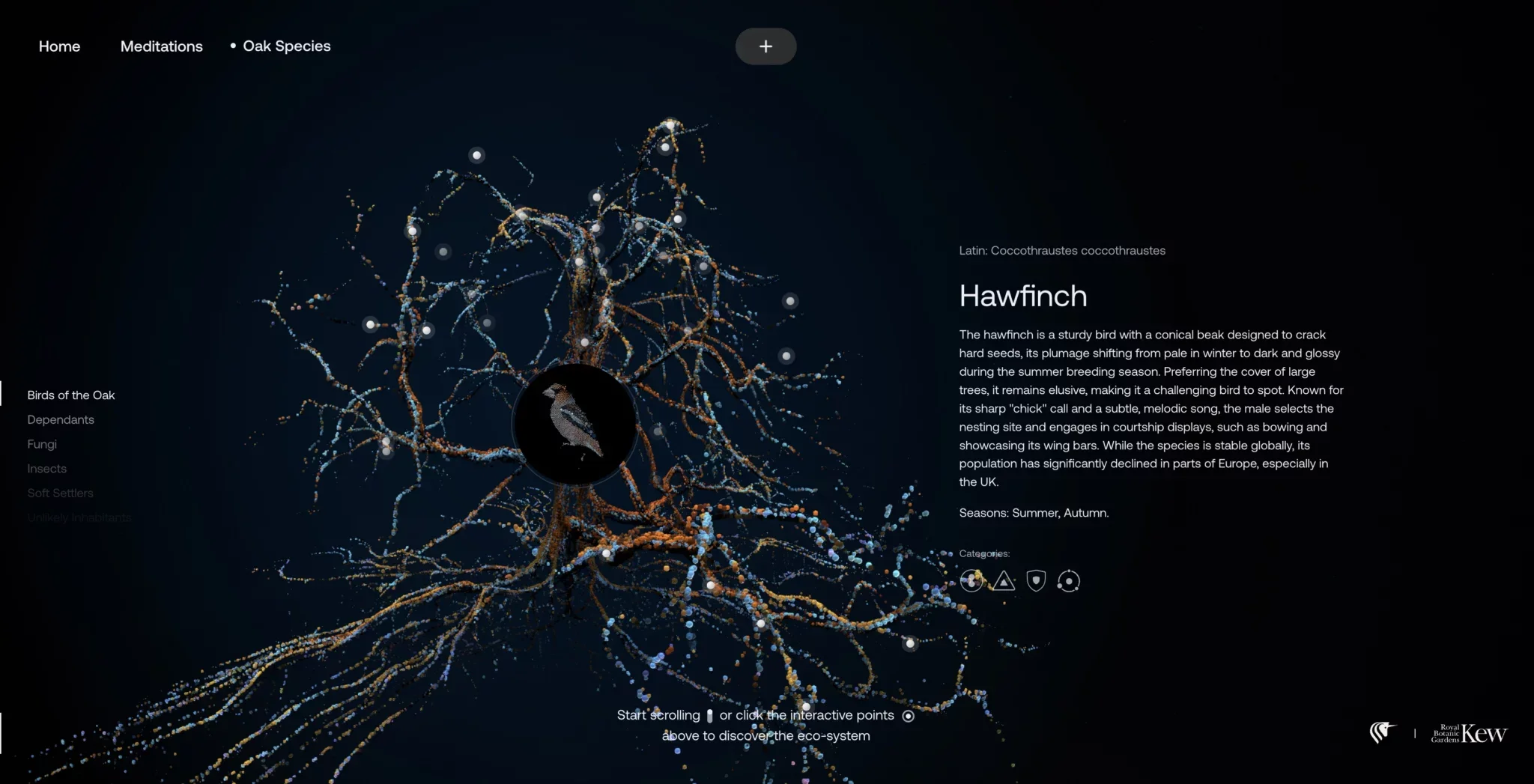Of the Oak: Interspecies Connections in a Living World
Of the Oak
At first glance, an oak tree might seem ordinary—just another shape in the English landscape. Its rough bark, wide-spreading crown, and deep green leaves in summer draw little attention. But when you spend time with it, a profound sense of balance and ancient rhythm emerges. This is not a solitary being; lichens adorn its bark, beetles burrow into its wood, butterflies dance through its canopy, and birds build nests among its branches. Beneath the ground, fungi weave the soil into a vibrant tapestry. In Britain alone, over 2,000 species depend on the oak, each finding their place within this generous organism.
And though oaks often symbolise ancient woodlands and rural countryside, they are not confined to wild places. They stand in city parks, village greens, gardens, and estates—woven into both cultivated and natural landscapes. Wherever they grow, they anchor communities of life around them.
Yet, we often overlook this complexity. To the human eye, a tree may appear merely as background—green, still, silent. What escapes us are the countless exchanges taking place constantly: roots trading sugars with fungi, leaves drawing in carbon, branches offering shelter, seeds carrying potential futures. The oak is not just a tree; it is a world.
Fragile Continuity
Oaks have shaped Britain for over a million years. The familiar English oak (Quercus robur) and sessile oak (Quercus petraea) recolonised the land after the last ice age, around 10,000 years ago. They have stood alongside shifting climates and human histories, symbols of strength and endurance in folklore and myth.
But permanence is an illusion. Today, climate change, invasive pests, and oak decline diseases threaten the stability these trees once embodied.
This fragile reality underpins Of the Oak—an installation and research project by the London-based collective Marshmallow Laser Feast. To immerse oneself in its networks is to feel both their resilience and their vulnerability. The oak’s survival—and that of the countless species it supports—depends on the choices we make, the care we extend, and the systems we build for coexistence.
Making the Invisible Visible
Much of the oak’s vitality is hidden. Its roots stretch deep into the earth, entangling with fungal networks that act as conduits of communication and trade. Through these threads, sugars produced in leaves travel downward, while minerals and water move upward, shared and redistributed. Above ground, light is absorbed, carbon is stored, and moisture circulates—processes that continue whether or not anyone is watching.
To reveal these unseen processes, Marshmallow Laser Feast collaborated with ecologists and scientists, employing technologies that extend the human senses. Photogrammetry pieced together thousands of images to model the tree in three dimensions. LiDAR scanning captured its shape with light pulses, while CT imaging of soil samples exposed hidden activity beneath the ground. Ground-penetrating radar traced the span of roots beyond the trunk, and sound recordings gathered the rhythms of the woodland over entire days.
Rather than leaving these tools in the realm of research, Marshmallow Laser Feast transformed them into storytelling instruments. What could have been raw data became luminous flows, vast projections, and immersive soundscapes—an interpretation that allows audiences to step into the oak’s body and witness it as a dynamic being.
Through tools such as photogrammetry, LiDAR scanning, and CT imaging of soil, Marshmallow Laser Feast unveiled hidden dimensions of the oak—its vast canopy above and the intricate networks below.
Composer and spatial audio artist James Bulley, in collaboration with the Tree Gang at the Royal Botanic Gardens, Kew, sets up a multichannel microphone array designed to capture the rich tapestry of life around the oak. These recordings form the basis of an immersive soundscape for Of the Oak, revealing the tree’s resonance and the many interwoven relationships it sustains.
At the Natural History Museum, high-resolution CT scans of soil, fungi, and leaves expose the invisible—showing roots, soil layers, and tiny habitats normally hidden from view.
An Immersive Encounter
Visitors to Of the Oak find themselves surrounded by towering images and shifting soundscapes. The project extends beyond the installation. A digital field guide maps the numerous species that coexist with the oak, while a series of meditations—written by Daisy Lafarge, Merlin Sheldrake, Ella Saltmarshe, and Laline Paull—encourages audiences to pause and reflect. Each writer offers a distinct perspective, from ecological science to poetry and storytelling, opening different pathways to encounter trees not as backdrops but as companions.
Holding Tension: Technology and Care
Marshmallow Laser Feast position their practice at the intersection of art, science, and ecology. Their work seeks to deepen our relationship with the more-than-human world. Revealing the animism of nature—its vitality, complexity, and interconnection—is, for them, not only an artistic pursuit but also a responsibility.
Yet even projects that aim to reveal ecological interdependence carry their own impacts. Creating Of the Oak required energy-intensive technologies and large-scale projections, each demanding significant resources. Over its 242-day production period, the project consumed around 7,100 kWh of electricity—roughly equivalent to two years of household use in the UK. The installation operates at about 10 kW per hour but runs within Kew’s sustainable infrastructure and powers down outside opening hours to reduce demand.
Acknowledging this footprint adds another layer to the work. Of the Oak is not simply a portal into the life of a tree; it also reflects our entanglement with technology. The oak becomes both subject and metaphor—reminding us that connection often comes with contradictions we cannot ignore.
“This work is not the final word, but part of a longer dialogue. As artists working at the intersection of ecology and technology, we are committed to continuing to evolve our practice—to reduce our impact, increase transparency, and explore new ways of telling stories that honour the world we depend on.”
Planting New Perceptions
Ultimately, Of the Oak is not a scientific lecture nor a simple spectacle. It represents a shift in perception. By merging ecological research with poetic imagination, Marshmallow Laser Feast invite us to slow down—to notice the rhythms of trees, the reciprocity of ecosystems, and the fragile yet enduring balances that sustain life.
The oak we once thought we knew reminds us that what appears still is never silent, and what seems singular is always plural. As you leave, the next tree you encounter may no longer feel like background, but like a vibrant community in motion—a partner in the shared tapestry of existence.
Info
Of the Oak, 2025
An Artwork by Marshmallow Laser Feast
Ersin Han Ersin, Barnaby Steel, Robin McNicholas
Commissioned by Royal Botanical Gardens Kew
Executive Producers: Eleanor (Nell) Whitley, Mike Jones
Producer: Roxie Oliveira
Head of Studio: Sarah Gamper Marconi
Lead Artist: Quentin Corker Marin
Lead Creative Technologist: Chris Mullany
Creative Developer: Sam Twidale
VFX Artists: Nicolas Le Dren, Lewis Saunders
Technical Lead: Miryana Ivanova
Music, Sound Design: James Bulley
Sound System Engineer: Simon Hendry
Assistant Recordist: Jake Tyler, Richard Hards
Recording Musicians: Kat Tinker, Audrey Riley, Daniel Pioro, Ian Stonehouse
Graphic Designer: Patrick Fry
Researcher, Copywriter: Eliza Collin
Marketing and Communications Lead: Erin Wolson
Technical Studio Assistant: Ieva Vaitiekunaite
Studio Administrator & Production Assistant: Alex McRobbie
Online Field Guide Design and Development: Lusion
Lidar Technician: Zachary Mollica
PR: Margaret
Contributing Authors for Meditations
Daisy Lafarge
Merlin Sheldrake
Laline Paull
Ella Saltmarshe
Meditations Voiced by Michelle Newell, Merlin Sheldrake
Scientific Advisors & Contributors
Kevin Martin (RBG, Kew)
Justin Moet (RBG, Kew)
Dr. Laura Martinez-Suz (RBG, Kew)
Lee Davies (RBG, Kew)
Peter Gasson (RBG, Kew)
Dr. Ruth Mitchell
Prof. James McDonald
Dr. Jenni Stockan
Paul Bellamy – RSPB
For Marshmallow Laser Feast
Executive Producers: Alex Rowse, Carolina Vallejo
Senior Producer: Martin Jowers
Producers: Anya Tye, Emmanuel Adanlawo
Tools & Infrastructure Engineer: Maria Astakhova
Social Media Content Manager: Selin Kir
For Installation
Documentation: Lamplight Media Ltd
LED Suppliers: Wheelhouse
Rigging Constructors: Focus Rigging and Scaffolding Ltd
Health & Safety Consultants: Event Safety Plan
Camera Case Design: Sienna Griffin-Shaw
Words: Nina Zulian
Sources & Further Reading
Articles & Contextual Background
Kew Gardens: A Legacy of Ancient Oaks
Mark Frith’s botanical drawings capturing ancient oaks across Britain and their symbolic role in culture.International Oak Society – Articles
A collection of essays and conservation insights dedicated to oak trees globally.
Scientific Research & Data
Oak-associated biodiversity in the UK (OakEcol)
A dataset of over 2,300 species that depend on British oaks, with details on ecological roles and habitats.Future Oak Project
Research into how oak microbiomes may help protect against diseases like Acute Oak Decline.Academic Study on Oak Ecosystem Decline
Peer-reviewed ecological research into oak decline and its wider impact.

